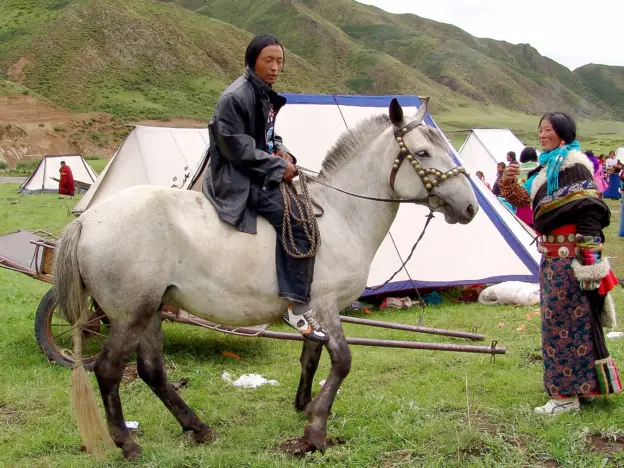Intro
Also called Hequl, Nanfanhe and Khetsyui, the Hequ breed comes from the area where the Quinghai, Sichuan and Gansu Provinces meet. At which point there is a large zag in the Yellow River. The name Hequ has only been used for this breed since 1954 and prior to that was called the Nanfan horse.
Origins
These animals date back at least to the T’ang dynasty in the 7th century where they were mentioned as a commodity often plundered during war. The Emperor established a ranch to create mounts for his cavalry & imported a number of animals from western Asia to cross with local Tibetan stock.
In the 19th century this breed was taken to the northern part of the province where the Datong horse was used to improve it’s lines. Today these animals are among the most numerous found in China.
Three Different Types
Three types of the breed emerged.
Jiaoke type – From the southern part of the Gansu province and generally coarser animals (their hooves are often problematic).
Suoke type Comes from the western Sichuan province. They tend to have a large head and carry their tails high (like those of the T’ang Dynasty did).
Kesheng type – Found in the Kesheng Mongolian Autonomous Region in Qinghai and has a stronger Mongolian horse influence.
Features
Average height 12.2 – 13.2 hands
Physique
Head is medium in length with a straight profile
Ears are long
Neck is medium in length and sloped
Chest is wide and deep
Shoulder is well sloped
Legs are medium with well developed joints and tendons
Hoof is large, but can be a weakness
Traditional Colors
Generally black, grey, bay and brown, but can be found in most colors
Use
Riding horse
Racing
Light draft
Pack animal
